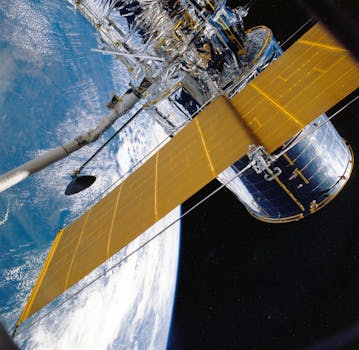
The Future is Now: Exploring the Cutting-Edge Innovations in Satellite Telecommunications
Satellite Telecommunications is the focus keyword for this article, and it is an exciting time for the industry as cutting-edge innovations are transforming the way we communicate globally. The future of satellite telecommunications is now, and it’s more promising than ever. With the increasing demand for high-speed internet and reliable communication services, satellite telecommunications has become a vital part of our daily lives.
Recent advancements in satellite technology have enabled the development of more efficient and cost-effective solutions for global communication. The introduction of low-earth orbit (LEO) satellites, for example, has reduced the cost of launching and operating satellites, making it more accessible to a wider range of industries and applications. Additionally, the use of advanced materials and propulsion systems has improved the performance and lifespan of satellites, allowing for more reliable and efficient communication services.
Advancements in Satellite Technology
One of the most significant advancements in satellite technology is the development of high-throughput satellites (HTS). These satellites use advanced technologies such as beamforming and frequency reuse to provide higher data rates and greater capacity than traditional satellites. HTS has enabled the widespread adoption of satellite-based broadband services, providing high-speed internet access to remote and underserved communities around the world.
Another area of innovation is the use of satellite constellations, which involve deploying multiple satellites in a coordinated network to provide continuous coverage and improved communication services. Satellite constellations have the potential to revolutionize the way we communicate, enabling real-time communication and data transfer between any two points on the globe.
Applications of Satellite Telecommunications
Satellite telecommunications has a wide range of applications across various industries, including maritime, aviation, and emergency response. In the maritime industry, satellite communications are used for navigation, communication, and data transfer between ships and shore-based stations. In aviation, satellite communications are used for air traffic control, navigation, and passenger communication services.
In emergency response situations, satellite communications play a critical role in providing communication services when traditional infrastructure is damaged or destroyed. Satellite communications can be used to coordinate relief efforts, provide critical communication services, and restore communication networks in affected areas.
Challenges and Opportunities
Despite the many advancements in satellite telecommunications, there are still several challenges that need to be addressed. One of the major challenges is the issue of space debris, which can pose a significant threat to the safety and operation of satellites. Additionally, the increasing demand for satellite services has led to a growing need for spectrum allocation and management, which can be a complex and challenging issue.
However, these challenges also present opportunities for innovation and growth. The development of new technologies and solutions to address these challenges can drive further advancements in satellite telecommunications and create new opportunities for industries and applications.
In conclusion, the future of satellite telecommunications is now, and it’s more exciting than ever. With the continuous advancement of technologies and innovations, satellite telecommunications is poised to play an increasingly important role in shaping the future of global communication. As we move forward, it’s essential to address the challenges and opportunities that lie ahead, driving further growth and innovation in this vital industry.






